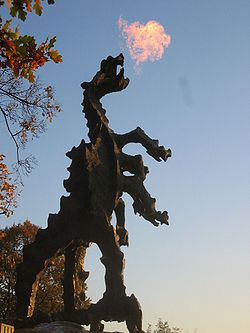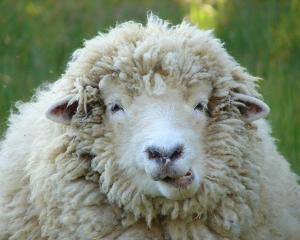 In many ways, Krakow is a town taken right out of a medieval storybook. Quaint narrow roads, towering cathedrals and an imposing castle greet anyone fortunate enough to visit this famous hub of Polish culture.
In many ways, Krakow is a town taken right out of a medieval storybook. Quaint narrow roads, towering cathedrals and an imposing castle greet anyone fortunate enough to visit this famous hub of Polish culture.
No medieval story, however, is complete without a fire-breathing dragon, and Krakow does not disappoint. Below Wawel Castle lies a natural limestone cave. Upon entering this “Smocza Jama,” or dragon’s den, one cannot help but be overcome with the coldness of the stone walls and the primal feeling that pervades this ancient expanse. Legend has it that the Wawel dragon made its home in this very cave. Here is the story.
Centuries upon centuries ago, Krakow’s inhabitants were being terrorized by a bloodthirsty dragon living in the limestone cave under Wawel Hill. No one knew where this beast had come from, only that it wreaked havoc on the town, destroying livestock and feasting on young Polish virgins.
The king was desperate for a solution. He offered all sorts of riches and his daughter’s hand in marriage to whoever could slay the monster. Soon knights arrived from across the country to face the beast in the hopes of collecting the reward. Their weapons were useless against the dragon’s thick scales; however, and they all suffered agonizing deaths. It seemed the dragon was there to stay.
Now, there was a young boy named Krak living in the city, a shoemaker’s apprentice, who claimed he could slay the dragon without any sword or armor. Naturally, everyone laughed him out of the room (even though sword and armor had proven useless up to this point), except for the king. By this point, the king had no place to turn to. He was willing to try anything to save his kingdom from the Wawel dragon.

Krak requested two items to slay the beast: a dead sheep and sulfur. Confused, but desperate for a solution, the king supplied the materials. After cutting the carcass open, Krak stuffed it with sulfur and sowed it back up. He then placed the sheep in front of the dragon’s cave in the middle of the night.
The next morning, the dragon emerged from its cave to begin a typical day of murder and destruction. When it saw a sheep just sitting in front of the cave, (apparently this didn’t seem odd at all), it gobbled it up. Big mistake.
Soon, the Wawel dragon began suffering the mother of all belly aches, as the sulfur in the sheep caught fire in its stomach and began exploding. Somehow, a ruptured gastrointestinal tract was not enough to kill the beast. Instead, it flew as fast as it could to the Wisła River and began drinking water to try and extinguish the fire. The water didn’t help, but apparently made the situation worse. Shortly after, the dragon exploded, its remains sinking to the bottom of the river.

Krak became an instant hero for killing the dragon in such an ingenious way. The king gave him his daughter’s hand in marriage. Eventually, Krak became king, built a castle atop the dragon’s den, and named the city Krakow.
When I was a kid visiting Krakow, I would always peer into the Wisła River, hoping to spot the bones of the Wawel Dragon at the bottom. I was never lucky enough to find them. Although, some bones of a mysterious large beast were found not far from the city.
Over the centuries, the Wawel dragon has become a major staple of Krakow’s culture. The limestone cave draws thousands of tourists each year. Outside the cave, near the river, a fire breathing statue of the Wawel Dragon was erected in 1972. Most visitors, especially kids, have a photo climbing it.
Many cultures have legends of dragons and dragon slayers, but this one is definitely unique. While other dragons are typically slain by swords, arrows or magic, the Wawel dragon went down from an exploding sheep carcass. Hmm, must be a Polish thing.

Kraaaaaaaaków ❤ ❤ ❤
Obviously I know this story. When I Was younger I read a book with Polish legends. Nevertheless, thank you for refreshing my memory! 😉
You have to watch this video: https://www.youtube.com/watch?v=IPfr7BbqnjQ 😉
LikeLike
about Polish legends*
LikeLike
This is partly wrong, the shoemaker’s apprentice’s name was Skuba, and Krak was the king already at the beginning of the legend! 🙂 We don’t know if Skuba became a king after killing the dragon. The oldest versions of the legend indeed say that the king Krak killed the dragon, but just with a sword. Sheep and sulphur belong to the versions where the shoemaker Skuba apprears.
LikeLike